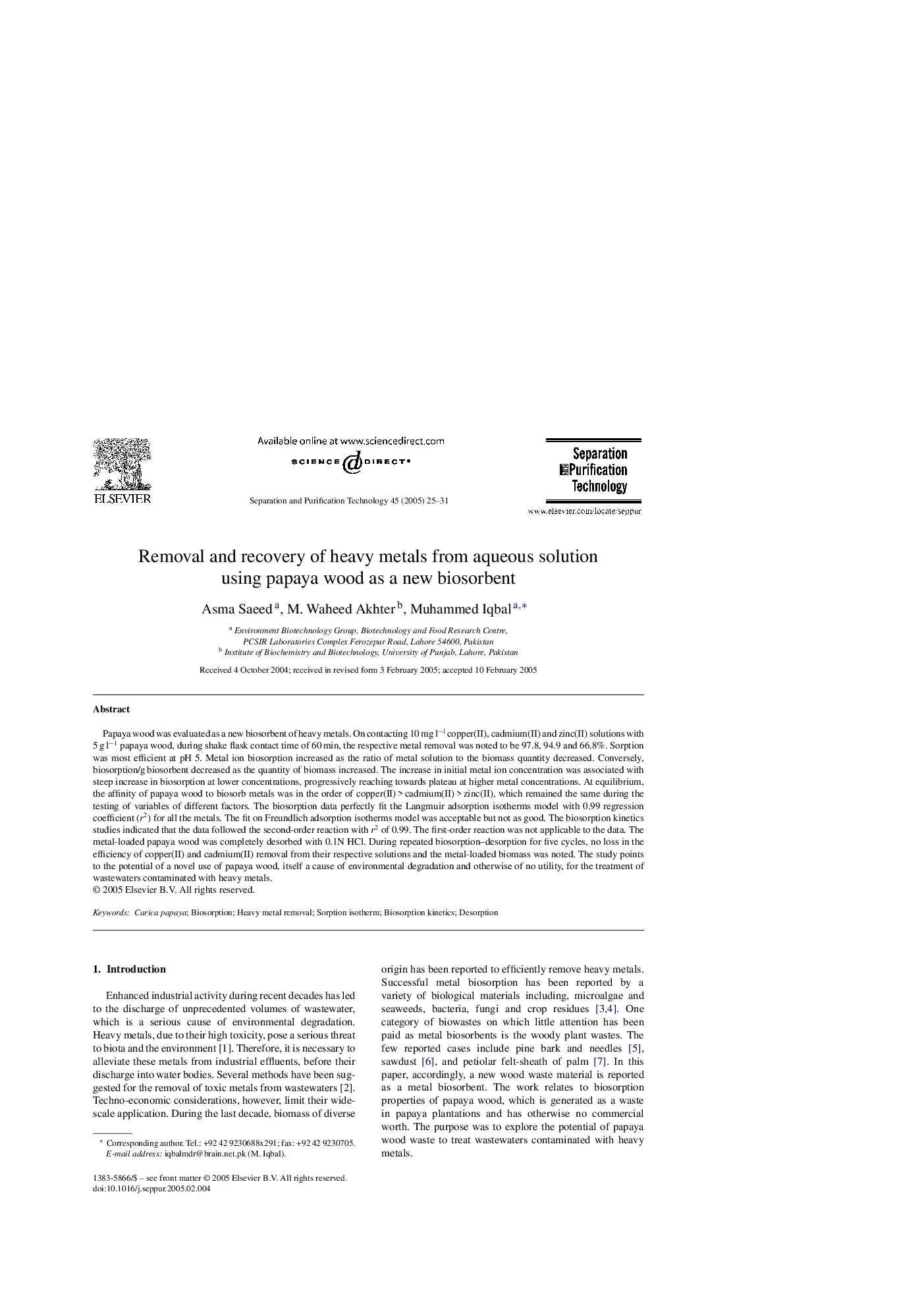| Article ID | Journal | Published Year | Pages | File Type |
|---|---|---|---|---|
| 10389815 | Separation and Purification Technology | 2005 | 7 Pages |
Abstract
Papaya wood was evaluated as a new biosorbent of heavy metals. On contacting 10 mg lâl copper(II), cadmium(II) and zinc(II) solutions with 5 g lâ1 papaya wood, during shake flask contact time of 60 min, the respective metal removal was noted to be 97.8, 94.9 and 66.8%. Sorption was most efficient at pH 5. Metal ion biosorption increased as the ratio of metal solution to the biomass quantity decreased. Conversely, biosorption/g biosorbent decreased as the quantity of biomass increased. The increase in initial metal ion concentration was associated with steep increase in biosorption at lower concentrations, progressively reaching towards plateau at higher metal concentrations. At equilibrium, the affinity of papaya wood to biosorb metals was in the order of copper(II) > cadmium(II) > zinc(II), which remained the same during the testing of variables of different factors. The biosorption data perfectly fit the Langmuir adsorption isotherms model with 0.99 regression coefficient (r2) for all the metals. The fit on Freundlich adsorption isotherms model was acceptable but not as good. The biosorption kinetics studies indicated that the data followed the second-order reaction with r2 of 0.99. The first-order reaction was not applicable to the data. The metal-loaded papaya wood was completely desorbed with 0.1N HCl. During repeated biosorption-desorption for five cycles, no loss in the efficiency of copper(II) and cadmium(II) removal from their respective solutions and the metal-loaded biomass was noted. The study points to the potential of a novel use of papaya wood, itself a cause of environmental degradation and otherwise of no utility, for the treatment of wastewaters contaminated with heavy metals.
Related Topics
Physical Sciences and Engineering
Chemical Engineering
Filtration and Separation
Authors
Asma Saeed, M. Waheed Akhter, Muhammed Iqbal,
